motor
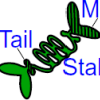 Recent work has shown that the C-terminal tail is particularly important to kinesin-5 motor function and mitotic spindle assembly. We characterized a series of kinesin-5/Cut7 tail truncation alleles in fission yeast. Our observations suggest that the C-terminal tail of Cut7p contributes to both sliding force and midzone localization.
Recent work has shown that the C-terminal tail is particularly important to kinesin-5 motor function and mitotic spindle assembly. We characterized a series of kinesin-5/Cut7 tail truncation alleles in fission yeast. Our observations suggest that the C-terminal tail of Cut7p contributes to both sliding force and midzone localization.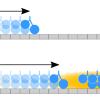 We show evidence for micron-scale communication between nanometer-sized motors.
We show evidence for micron-scale communication between nanometer-sized motors.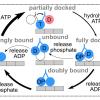 We describe a new simulation framework for motor protein and crosslinker interaction with microtubules in a lattice model.
We describe a new simulation framework for motor protein and crosslinker interaction with microtubules in a lattice model.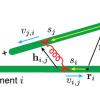 We explore different types of analytic models for crosslinkers and compare them to simulation.
We explore different types of analytic models for crosslinkers and compare them to simulation.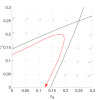 We develop a theory of steady-state overlap length which depends on the filament plus-end motor concentration, determined by a balance between motor arrival and
We develop a theory of steady-state overlap length which depends on the filament plus-end motor concentration, determined by a balance between motor arrival and
motor departure in the absence of motor-driven sliding. Hui-Shun Kuan's paper with Daniel Goldman's group at Georgia Tech on traffic jam avoidance in fire ant tunnel digging has been published in Science and covered in the New York Times, Washington Post, Houston Chronicle, SF Gate, Scientific
Hui-Shun Kuan's paper with Daniel Goldman's group at Georgia Tech on traffic jam avoidance in fire ant tunnel digging has been published in Science and covered in the New York Times, Washington Post, Houston Chronicle, SF Gate, Scientific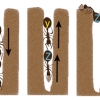 Groups of interacting active particles, insects, or humans can form clusters that hinder the goals of the collective. We find that digging performance can be robustly optimized within the constraints of narrow tunnels by individual idleness and retreating.
Groups of interacting active particles, insects, or humans can form clusters that hinder the goals of the collective. We find that digging performance can be robustly optimized within the constraints of narrow tunnels by individual idleness and retreating.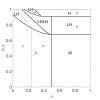 Inspired by experiments on the motion of kinesin-4 motors on antiparallel microtubule overlaps, we analyze a model incorporating the TASEP on two antiparallel lanes with binding kinetics and lane switching.
Inspired by experiments on the motion of kinesin-4 motors on antiparallel microtubule overlaps, we analyze a model incorporating the TASEP on two antiparallel lanes with binding kinetics and lane switching.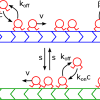 Biopolymers serve as one-dimensional tracks on which motor proteins move. These phenomena have inspired theoretical models of one-dimensional transport, crowding, and jamming.
Biopolymers serve as one-dimensional tracks on which motor proteins move. These phenomena have inspired theoretical models of one-dimensional transport, crowding, and jamming.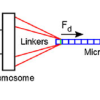 When chromosomes are being separated in preparation for cell division, their motions are slow relative to the speed at which many motor enzymes can move their cellular cargoes and at which microtubules depolymerize.
When chromosomes are being separated in preparation for cell division, their motions are slow relative to the speed at which many motor enzymes can move their cellular cargoes and at which microtubules depolymerize.

